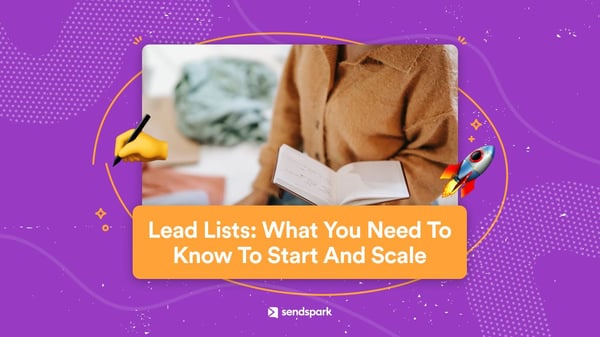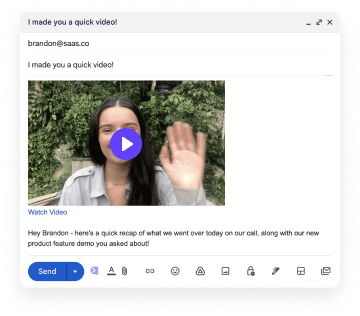For those wanting to market their business, they're going to need a good lead list. Finding and maintaining those leads can be tricky, though. Creating a list is worth it though, as you'll be able to reach the customers who are already interested in your product and potentially want to buy from you.
Here are some of the best ways to create and manage that lead list, as recommended by the experts.
What Is A Lead List?
Firstly, what is a lead list, and why is it so important to your business? A lead list is a directory of all the contacts you have that are already interested in your product, or would be receptive to hearing about it. Creating that list is an ongoing process, and you'll gather those contacts from various different sources.
Before you use any of those leads, they do need to be validated by your marketing team. You have to be sure that you're sending communications to the right people, as that helps ensure success. They will do this by using the data they already have on your customers, to see if this new contact is similar to them.
Why Use A Lead List?
When you have a lead list in place, it's going to make finding new leads much quicker and simpler. By creating that list, you have a list of would be customers that you can make certain predictions about. If you can anticipate their needs, when they need them, you can reach out to them. That makes them more likely to buy from you.
In some cases, you'll see that you can actually buy lead lists. They take a lot of work off you, as they've already gathered the contact info, ensured that they're all the right audience for your company, and they may even have other details, such as income level. You can buy them and use them, but be aware that they're not always accurate, and that can be a waste of cash later down the line.
As such, it's usually better to create and maintain your own lead lists. This ensures that you'll get just what you're looking for in terms of potential customers, and you'll know that the contact details are usually going to be accurate.
What Detail Should Be In A Lead List Contact?
When creating your lead list, you want to know that you have all the relevant info to help you contact the right person. Typically, you should have:
- Full name
- Phone number
- Email address
- Company name
- Job title
This should be enough to contact the relevant person at the company, and pitch your product to them.
How to Make a Lead List
Now that you know the basics of creating a lead list, you'll need to know how to do it. Here are some tips to help you create and maintain your list with ease.
1. Identify Your Audience
This is the very first thing you need to do, if you're looking to create a good quality lead list. If you don't know who your audience is after all, you won't know who to contact about your product.
The way to do that is to create an Ideal Customer Profile, or ICP. That should be an idea of who your customers are, the person who would get the most value from your product. When thinking of your ideal customer, you need to think about who would have a quick and successful sales cycle, who would have a high retention rate, and who would be most likely to become a brand ambassador for you.
To get started creating an ICP, you'll need to start gathering data on your audience. “This is a time consuming process, but it's essential” says Alan Marston, a marketing writer at Last Minute Writing and Essay Services. “Having that high quality data will make it much easier to work out who your ideal customer is, and get better results long term.”
For example, you'll need to gather data such as:
- Behavioral patterns of your existing buyers
- Common purchasing behaviors in your industry
- Feedback from your buyers
- Analysis of social media followers
Once you have this data, you'll be able to start segmenting your audience. That will help you create several different buyer profiles, and that ensures you'll be targeting the right customers every time you contact them.
You will find that some marketing tools have specific capabilities for creating customer profiles. If you're using one for your business, you'll want to investigate using these as they can save you time.
2. Find Your Potential Lead's Contact Details
Once you have an idea of who you're aiming your product at, you'll want to find the right contact details for them so you'll get the attention of the right person. There are multiple ways of doing this, so it's not as difficult as you'd think.
- Use lead info platforms: There are several platforms you can use to hunt down the correct info for your leads, such as ZoomInfo. These will often have the correct contact details that you can enter into your database. It's always worth double checking the info online, before you enter it as correct.
- Create Facebook/Google ads: A good way of getting the correct lead info is to actually get customers to give it to you. Facebook and Google ads are a good way of asking for those details, in return for benefits such as an initial discount on your product.
- Host webinars and events: This is another good way to gain correct lead contact info. Again, you're hosting events that have value to your leads, and in return you'll get the info of leads that you know are interested.
3. Nail Down Your Offering
When creating a lead list, you should know exactly what you're offering the customer. When you know your product inside and out, you'll be able to target your communications to the right customer and show them what you can do for them. The more relevant your product is, the more likely they are to buy it.
Consider what pain points your product can help with. It's likely that there's several that it addresses, but some of them will be more important to some customers than others. You can work out what's important to a customer segment in several ways. For example, you can go through existing customer data, watch your competitors, and talk to your sales team.
4. Review Your Leads
Now you have an idea of who could be put on your lead list, you'll need to think about who exactly you should be contacting, in order to make the sale. “When you're more specific in researching your leads, you're going to have more success” says Danielle Peters, a tech blogger at Research Papers UK and Gum Essays. “Take that time now, as it will save you a lot of time down the road.”
There are several approaches you can take to segment your audience further, and get relevant lead data:
- Demographic: Use details such as job title, income, and location
- Psychographic: Examine behavioral patterns, interests, needs, and objectives
- Firmographic: Focus on the company, looking at size, reach, ownership, and business growth
- Technographic: Looking at the kind of tech that a company uses
The type of research you use will depend on the businesses you target, and your product overall.
5. Ask For Referrals
The final way you can get good quality leads for your list is to talk to your current customers, and ask for referrals. This is a great way to get leads, as your current customers are going to be happy with you and what you offer. As such, you should be able to get leads for other customers who would be interested in what you have to offer.
This can be done via a marketing campaign too. If you do this, you can use referral codes as a way of tracking which customers are being referred to you, and from whom. That helps you see where the best quality leads are coming from.
These are some tried and tested tips on how to create a good quality lead list for your company. Once you have that in place, you'll be able to reach out to the potential customers who are most likely to buy from you.
Eula Skiles is a digital marketing strategies expert, and writes about best marketing practices for businesses. She's also passionate about entrepreneurship, and aims to help new business owners find success.



